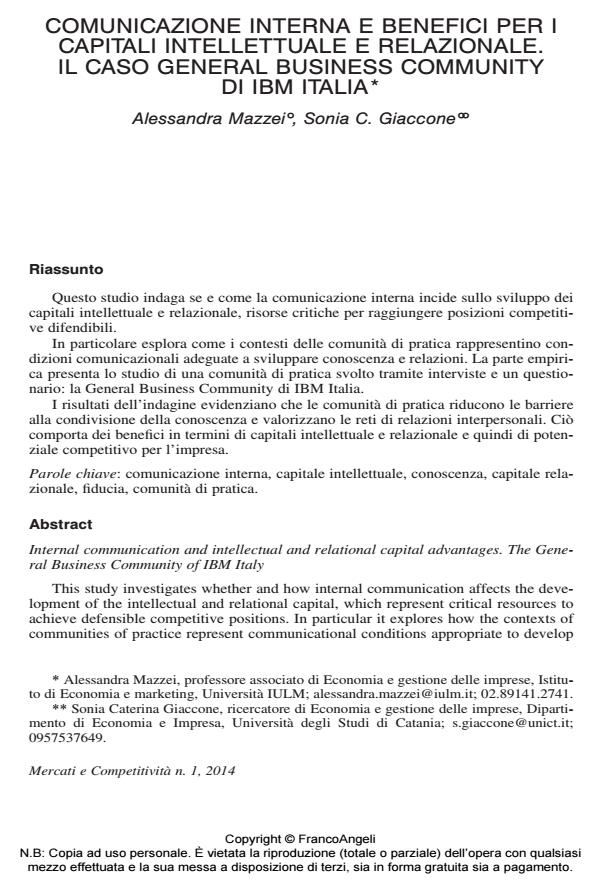Internal communication and intellectual and relational capital advantages. The General Business Community of IBM Italy
Journal title MERCATI E COMPETITIVITÀ
Author/s Alessandra Mazzei, Sonia C. Giaccone
Publishing Year 2014 Issue 2014/1
Language Italian Pages 22 P. 103-124 File size 577 KB
DOI 10.3280/MC2014-001006
DOI is like a bar code for intellectual property: to have more infomation
click here
Below, you can see the article first page
If you want to buy this article in PDF format, you can do it, following the instructions to buy download credits

FrancoAngeli is member of Publishers International Linking Association, Inc (PILA), a not-for-profit association which run the CrossRef service enabling links to and from online scholarly content.
This study investigates whether and how internal communication affects the development of the intellectual and relational capital, which represent critical resources to achieve defensible competitive positions. In particular it explores how the contexts of communities of practice represent communicational conditions appropriate to develop knowledge and relationships. The empirical part provides a case study of one community of practice: the General Business Community of IBM Italy. The results of the interviews and of the questionnaire show that communities of practice help to generate both intellectual and relational capital, reducing barriers to knowledge sharing and developing networks of interpersonal relationships.
Keywords: Internal communication, intellectual capital, knowledge, relational capital, trust, community of practice
Alessandra Mazzei, Sonia C. Giaccone, Comunicazione interna e benefici per i capitali intellettuale e relazionale. Il caso general business community di Ibm italia in "MERCATI E COMPETITIVITÀ" 1/2014, pp 103-124, DOI: 10.3280/MC2014-001006